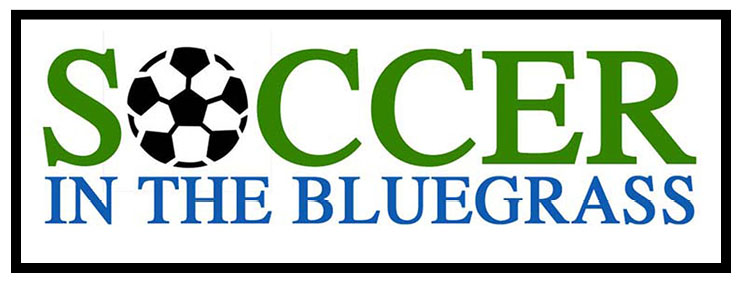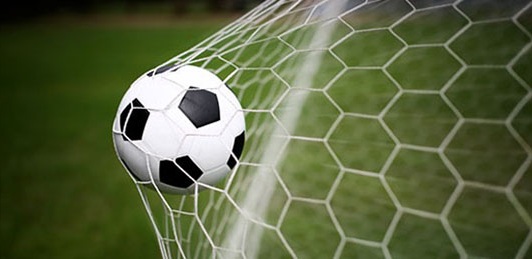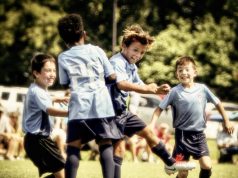Tryouts are coming. For players on club teams and hoping to make club teams, it’s a time of stress and uncertainty.
Will your player be able to make the team? Will they be able to make the next team up? Will they get demoted away from their friends? Will they get cut?
Lexington F.C.’s bylaws, for example, state teams will be formed from “the most competitive players available.”
That’s not an easy thing to come to terms with when your child is not deemed one.
I’m a parent of a child who has missed a cut. I have seen my child’s friends miss cuts to either make a team or make the team they really wanted. It’s not pleasant.
But the club is tasked with developing the most talented and competitive players it can. And the nature of that world leaves some players behind.
While getting cut might be devastating in the moment, it can also be liberating and motivating.
Michael Jordan was cut as a youth.
Carli Lloyd was cut as a youth.
If your child has a passion for the game they will look for open windows beyond closed doors.
What’s important to remember at the tryout is that your player should try to be the best version of themselves in that small frame of time, especially if the next coach is a new coach or your player is coming from outside the club.
I’ve had one coach tell me he could assess a player in about 30 seconds.
I’ve had another coach tell me that if their first touch is bad it shades the rest of the day.
Or if the kid continually hits a toe ball … well, you shouldn’t be kicking toe balls at this point.
Over a winter tryout I had another coach tell me if they didn’t think the outside player could start, then they wouldn’t earn a spot on the team.
You get the picture. There are tough and subjective standards and each coach might have their own preferences that you might not agree with. But you can’t control that.
What your child can control is their best effort.
Be focused. Listen. Keep that first touch tight. Be active.
Be confident and don’t worry about mistakes. Shrug those off and play the next play. Mental toughness is as important as physical toughness.
Great body language will go a long way. Slumped shoulders, hands on hips, standing still instead of bouncing on your feet will not.
Below is a handout from the Kentucky Youth Soccer Association about what it takes to be an Olympic Development Player. Those are the players that try out and compete at the regional level. It’s some difficult criteria. But it’s also a good measure of what expectations are to make that top tier at a club and what the standards will be as they get older and more mature.
To learn more about club soccer visit our “Play Club” page.
What It Takes To Be an ODP Player (via KYSA)
When choosing state, regional and national teams, coaches look for a blend of types of players who all work hard to win the ball. They need players who have the talent to recognize and take advantage of opportunities to “finish” or score goals or to set up goal scoring.
Coaches look for a perfect mix of “workers” and “players,” the constant and flashy. Each coach has his or her own idea of that proper blend, but the following 10 components are always considered when selecting players for ODP teams.
- Touch on the ball: Control of the ball while in possession, with both feet. Player’s obviously have to be comfortable while in possession of the ball.
- Balance: Being in control of the body and able to change direction while controlling the ball.
- Technical speed: The speed with which a player can effectively use their skills in controlling and playing the ball.
- “Coach-ability”: The ability to listen, understand instructions and carry them out. This is also the ability to develop good habits.
- Work rate: The willingness to push oneself to the limit. Playing both ends of the field, both offense and defense.
- Awareness: The ability to recognize opportunity in front, behind and to the side, whether it is a shot, a pass, or a dribbling chance to advance. Reading the “shape of the match”, one’s “game sense.”
- Reaction to failure: Coaches want players who are very able to continue to play hard after a bad break or mistake. No dropping the head and disappearing mentally.
- Leadership qualities: The ability to communicate, not just talk, to others, to demand the ball, to take charge in intense situations.
- Physical speed: Being fast, being effective enough without being exploited by opponents.
- Size and strength: The ability to physically compete against bigger opponents. Many components are important to making an ODP player. Different positions call for different abilities. During each ODP camp, whether it is the state, regional, or national, the player learns new ideas about soccer. They have the chance to compare themselves to others of the same high caliber and the opportunity to learn from talented and caring coaches.









